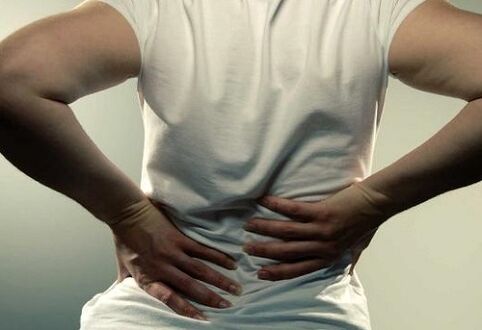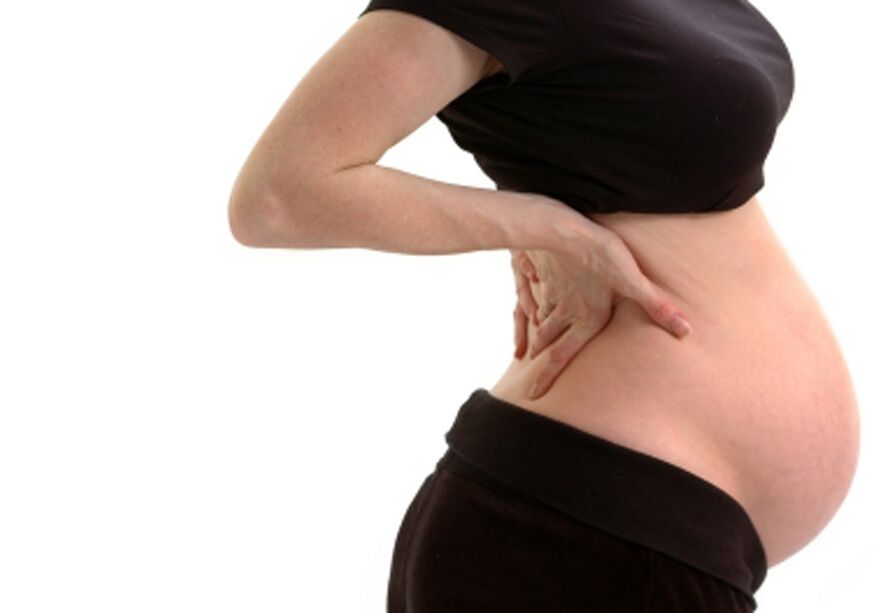
Many patients who have just crossed the threshold of the doctor's office, holding on to their lower back, have asked, "Why does the lower back hurt, and what medication will help with this pain? "
Unfortunately, things aren't that simple, and you can only choose the right treatment once you've determined what's causing the pain.
Quite a few people go through life with mild to moderate low back pain and accept it as normal. But even if you have persistent mild or severe tingling in your lower back for a significant amount of time, you should see a specialist to diagnose the problem. After all, if you do not take timely measures, the condition will get worse and worse.
Back pain is not a dangerous disease, but over time, it will cause pain and discomfort for patients.
Primary and secondary pain syndromes
The causes of lower back pain can be very different, and only after thoroughly understanding their causes can you begin to deal with the disease.
According to the medical classification of the disease, primary and secondary pain syndromes, occurring in the lumbar region, are distinguished.
The main pain syndrome is formed against the background of degenerative-dystrophic pathologies of the spine. These include osteonecrosis, in which cartilage and bone tissue is damaged, as well as spondylolisthesis, which affects the disc or synovial joints.
Secondary pain syndrome can occur for a variety of reasons. First of all, the lower back is constantly in pain accompanied by curvature of the spine (scoliosis). In addition, this condition can be observed due to metabolic disorders of bone tissue (osteoporosis or osteomalacia).
Usually, the cause of pain in the low back is non-infectious inflammation (ankylosing spondylitis, Reiter's syndrome, rheumatoid arthritis, etc. ).
A rather dangerous cause of low back pain is a fracture of the lumbar vertebrae.
Pain syndrome can be the result of various infectious diseases that lead to damage to the vertebrae and discs (brucellosis, tuberculosis, epidural abscess).
The lower back is painful due to acute disorders of the spinal circulation (state of stroke), as well as diseases of the gastrointestinal tract (obstruction, atypical acute appendicitis).
In some pathologies, back pain is reflected. This occurs when organs located in the pelvis are affected (gynecological conditions, STDs, renal colic).
Pain is often felt when stretching the lumbar muscle. The lower back is very painful when the discs of the lumbar region are displaced. At the same time, due to severe pain, the patient has a forced posture of the body, and the ability to move when walking is also very limited.
Coxarthrosis (fibrosis of the hip) is also often a secondary cause of pain.
Other causes of back pain
Usually, acute low back pain occurs due to unsuccessful movement, working for a long time in an uncomfortable position, improper lifting or carrying weights, falling or banging, straightening at the same time, alsosuch as prolonged hypothermia or exposure to drafts. All of these "accidents" can cause spasms and inflammation of the deep back muscles.
Many patients note that there is often low back pain after sleeping. There are good reasons for this. The simplest of them is the uncomfortable position of the body in a dream. For those who like to sleep on their stomach, the muscles in the lower back are often tense, leading to pain. Sometimes such pain is caused by the bed or pillow itself not fitting properly. That's why experts recommend sleeping on an orthopedic mattress to fully relax your back.
In addition, low back pain in the morning can be a symptom of diseases of internal organs. Thus, pathologies of the circulatory, digestive and genitourinary systems are accompanied by back pain.
Back pain caused by negative emotions
Very few patients realize that the lower back is one of the body parts most susceptible to psychological effects, and therefore, it reacts very strongly to severe stress and excitement.
Anger, anger, irritability or intense fear contribute to the release of significant doses of adrenaline into the bloodstream. As a result - an increase in the tone of the back muscles. And in the absence of adequate discharge, the hypertonic muscles begin to gradually tighten. And then - the syndrome of spasms and pain. It should be noted that spinal disorders very often develop in mentally unstable people, and for such patients psychotherapy is the best treatment.
Lower back pain during pregnancy

Many pregnant women worry about the causes of low back pain. During early pregnancy, this can be due to kidney or urinary tract disease. Also during this period, the production of progesterone increases, so the ligaments are not significantly softened, which can cause low back pain.
During the second trimester of pregnancy, when the pregnant belly increases significantly, the load on the spine is greatly increased and, as a result, there are pulling pains in the lumbar region.
Severe low back pain during pregnancy can sometimes be the cause of a neurological disease (herniated disc or sciatica).
What to do if your back hurts?
First of all, in case the back pain does not improve within three days, it is necessary to consult a neurologist. Only a specialist can develop an exact treatment strategy, which will depend on the severity of the patient's condition.
As a rule, most low back pain requires conservative treatment, however, sometimes there are cases that cannot be cured without surgical intervention.
When conservative treatment is indicated, three main goals are pursued:
- Pain relief for the patient.
- Develop a program of therapeutic and preventive measures to slow degenerative-dystrophic processes in the spine.
- The patient quickly returned to a normal life.
First of all, we all need to learn how to properly relax after exertion. To do this, you need to lie flat on a hard surface, and for the best relaxation, place a pillow under your knees.
Patients with reduced mobility are advised not to stay in bed for more than 2-3 days, even if they are in pain (not too strong, of course), as this significantly weakens the vertebral muscles. . For persistent pain syndrome with recurrent pain in the leg, orthopedic consultation is required.
In cases where osteonecrosis is diagnosed, complex drug therapy is prescribed with the help of drugs that relieve pain, improve blood circulation and restore nerve tissue.
To eliminate back pain, vertebral blockade has been shown to be good. Such injections help reduce inflammation and muscle spasms, thereby reducing pain.
When a herniated disc is discovered, the question is whether surgery is possible. This technique involves removing the hernia that is pressing on the root and allowing it to recover.
























